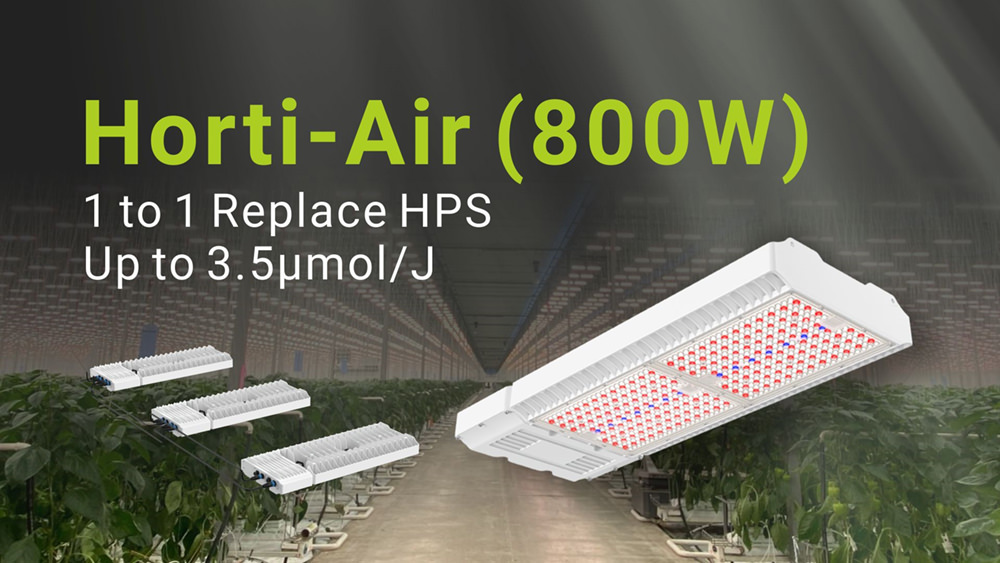Why LED Grow Lights Use Less Electricity
With energy costs soaring and the climate change crisis threatening global food security intensifying, that's why farmers are considering simply switching to LED grow lighting for energy savings, cost reductions and environmental benefits. LED grow lights are increasingly taking center stage as a more cost-effective solution, they offer sustainability, higher durability, and a longer lifespan. The first and simplest fact we all know about LED energy saving is that LED grow lights use less energy than traditional HID, MH, HPS.
LED grow lights use energy more efficiently than traditional HID, MH, HPS
Although HPS grow lights are more energy efficient and cost effective than other forms of lighting such as metal halide grow lights, incandescent or fluorescent grow lights, they still require electricity. HPS grow lights convert only 30% of the energy they use into usable light, while LED grow lights convert about 50% of electrical energy into light. Research on the use of LEDs in different climates and applications has found that LED grow lights may save 35-50% of the total greenhouse energy needs. These lights are also much better for the environment in the long run because they can be managed and disposed of safely compared to HPS grow lights.
Customizable and more powerful lighting solutions
- growers can control heat and light more efficiently
- can manage and reduce costs over the long term
- can be customized into a custom solution that perfectly matches the needs of the farmer, crop type, climate and available growing space.
To get the most value out of your LED grow light installation, work with a trusted partner who can provide customized services, not only to ensure the correct spectrum and overall lighting efficiency, but also to experts who create the right formula for your environment up-to-date technology and science at your fingertips, ready to help you increase your production.
LED grow light power supply not ballast
Traditional grow lights require the use of ballasts to convert the electricity in the traditional base into usable energy for the HID bulb. This conversion alone means that energy is wasted initially just to turn on the lights.
On the other hand, LED grow lights are designed to plug directly into a power supply without the need for ballasts, so no energy is wasted
Reduce heat output
HPS grow lights generate a lot of heat, converting most of the energy they consume into thermal radiation, also known as infrared radiation. Not only does thermal radiation represent wasted energy, but it can also warm a room very quickly, and if your lights aren't hung high enough, it can burn the leaves of your plants. Specialized ventilation and cooling facilities are required. On the other hand, LED grow lights are much cooler than HPS grow lights. LED grow lights produce only trace amounts of heat, can be placed closer to the plants, and because they offer different types of light spectrum, they can be intelligently placed around the grow space to optimize plant health and yield. Working with companies that understand light spectrum, light and technology, growers can use LED grow lights in a variety of different ways, optimizing their use of space and light in unexpected ways. LED grow lights can be neatly installed in small, narrow and narrow spaces as well as large commercial spaces, making them more flexible than HPS grow lights.
Light distribution is important
The LEDs are configured to emit light in a downward directed beam. Traditional grow lights emit light in all directions, which makes them require hoods and reflectors to direct the light onto the plants. These devices add bulk and are not efficient at directing light to plants, thereby indirectly increasing energy consumption. High-quality LED grow lights are equipped with secondary optics to distribute the light evenly over the growing area. It also ensures that photons are delivered directly to your crops.
Switching to LEDs not only saves energy - up to 40% compared to standard HPS lamps - but also further energy savings if lighting solutions are applied correctly in the growing environment. Switching to LED lighting is a good option if you're looking to reduce the energy costs of your farming operations, or if you're concerned about limiting energy consumption in order to protect the environment.
While the initial cost of tunable, high-efficiency LED lighting is high, LED lighting also lasts 5 to 10 times longer than high-pressure sodium lamps, which can help you save on replacement lighting costs in the long run. In many cases, greenhouse operators who invest in energy efficient LED lighting see returns within two to three years, especially with the help of rebates.
If you choose our Horti Air 800w Top Led grow light, your efficient lighting system will last for at least 5 years with almost no degradation in light quality. Contact us to help you find the right lighting solution for your facility setup.

Agnes Feng | [email protected]
Wechat/Whatsapp/Skype:+86 13128738533

